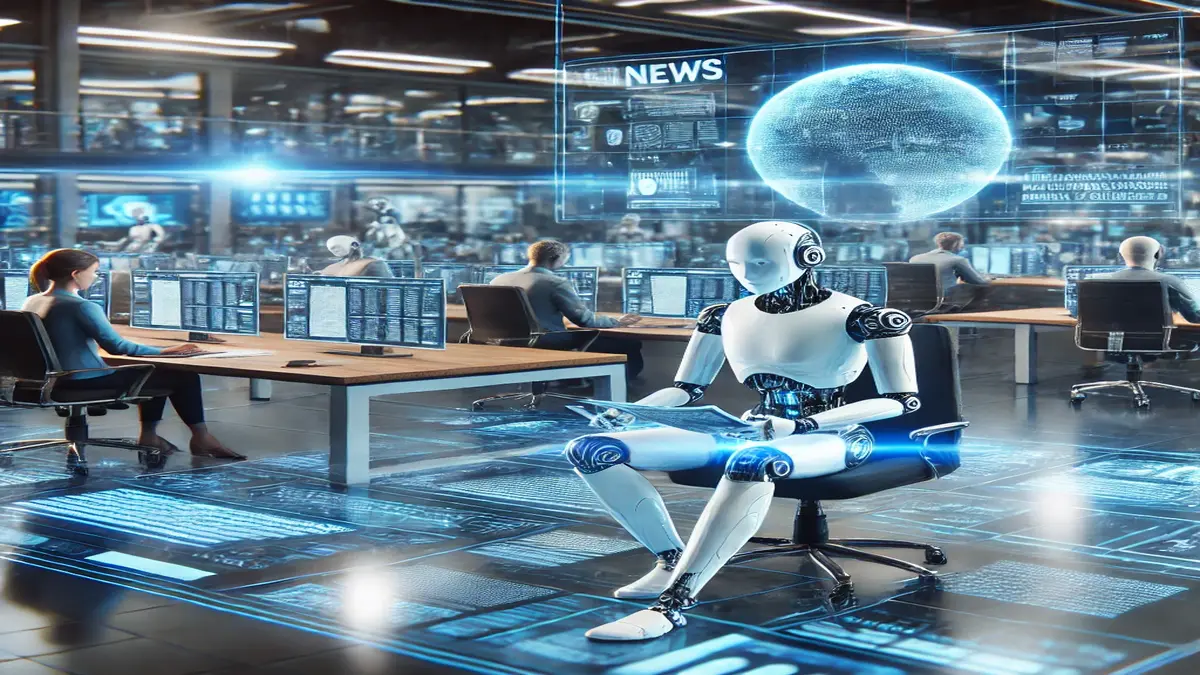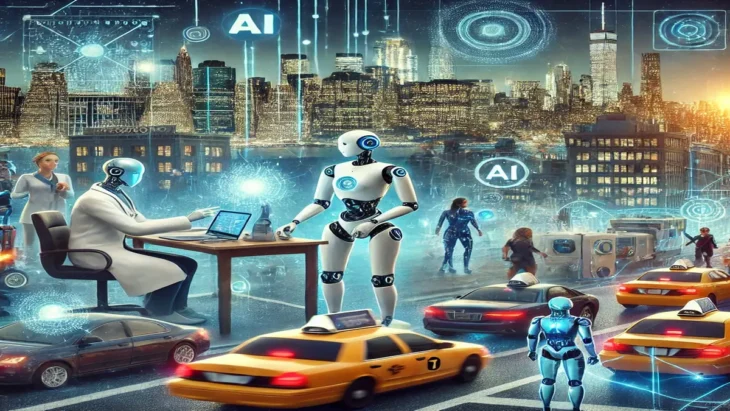If you haven’t noticed, the future of journalism is officially here—and it’s got a lot of circuits and algorithms. AI-generated news is no longer a sci-fi concept; it’s part of our daily media consumption. From automated reporting to the rise of deepfake journalism, the industry is being transformed by machines—and yes, it’s as weird and awesome as it sounds.
1. The Rise of AI-Generated News
AI has transformed into the ultimate content factory, revolutionizing the way newsrooms operate—especially the major players. Today, AI tools can analyze data, generate articles, and craft stories that sound remarkably human. In fact, AI-generated news is so precise that distinguishing between a machine and a real journalist is becoming increasingly difficult.
But does this mean human journalists are becoming obsolete? Not quite. AI primarily handles routine stories like sports results, financial reports, and weather updates—tasks that would otherwise consume valuable time. It’s not outright replacing jobs (yet), but its ability to produce content at scale is undeniably reshaping the industry, particularly in breaking news coverage.
As technology evolves, individuals and businesses must prepare for economic shifts. In uncertain times, securing the best investments for economic downturns is crucial to maintaining financial stability. Diversifying assets, investing in recession-resistant industries, and leveraging AI-driven market insights can help navigate turbulent economic landscapes effectively.
What’s the impact?
AI helps outlets cut costs and produce news faster, but it also opens up new ethical concerns. If AI is the one writing, who’s responsible for the accuracy? And what happens when these bots start getting creative with headlines? We might be reading more “clickbait” than ever.
2. Automated Reporting: The Future of Breaking News
One of the most exciting areas of AI in journalism is automated reporting. Think about it: AI can gather data, analyze trends, and instantly turn that into a report. When a new political scandal breaks or an earnings report drops, AI can create stories in minutes. Human reporters are still needed to add the nuance and context, but AI can handle the basics.
Take the 2020 election results, for example. On election night, AI systems were already writing results stories and pushing them live as soon as the data was available. No waiting around for a reporter to write the full piece. AI did it in seconds.
What’s the problem? The downside is that, with automation, we might lose the human element of storytelling. News becomes a bit too robotic, less empathetic. But on the flip side, it helps journalists focus on in-depth reporting and investigations, leaving the boring stuff to the bots.
3. Deepfake Journalism: The Dark Side of AI News
Now, let’s talk about the ugly side of AI: deepfake journalism. AI technology is so advanced now that it can create fake videos, audios, and even AI-generated news that feels incredibly real. Imagine a fake interview with a politician or a doctored video of a major event. Welcome to the deepfake age.
While deepfake videos have been popular in entertainment and prank videos, their potential to disrupt news media is downright terrifying. Imagine an AI-generated fake news story that spreads like wildfire. The line between fact and fiction becomes a lot blurrier when AI can create “news” that looks and sounds entirely convincing.
What can we do? News organizations are scrambling to fight back. AI detection tools are being developed to spot deepfakes before they go viral, but it’s an ongoing battle. Until then, critical thinking and double-checking sources are your best defense against fake AI news.
4. The Future: AI + Human Journalists = The Ultimate Team?
Despite all the robot talk, AI isn’t about to replace human journalists (at least not in the foreseeable future). In fact, AI is just a tool—an incredibly powerful one—that can help journalists be more efficient and productive. When used correctly, AI and human journalists can form the ultimate tag team.
Example? AI can handle the mundane tasks, like sorting through data, writing standard reports, and fact-checking, while human journalists can focus on the juicy stuff: investigative pieces, feature stories, and complex interviews.
It’s a partnership that could revolutionize the industry, but it’s all about balance. Journalists will need to embrace AI while keeping the human touch that makes storytelling so powerful.
5. The Takeaway: Embrace the Change, But Don’t Let the Robots Take Over
AI is changing the game in journalism, but it’s not the end of the human reporter—yet. The future will likely look like a world where bots and humans work together to deliver news faster and more efficiently. But as we dive headfirst into this new era, let’s not forget that the human element—the creativity, the empathy, the stories that only we can tell—will always be at the heart of journalism.
So, while the robots are writing, let’s make sure we’re still the ones in charge of the story.
















